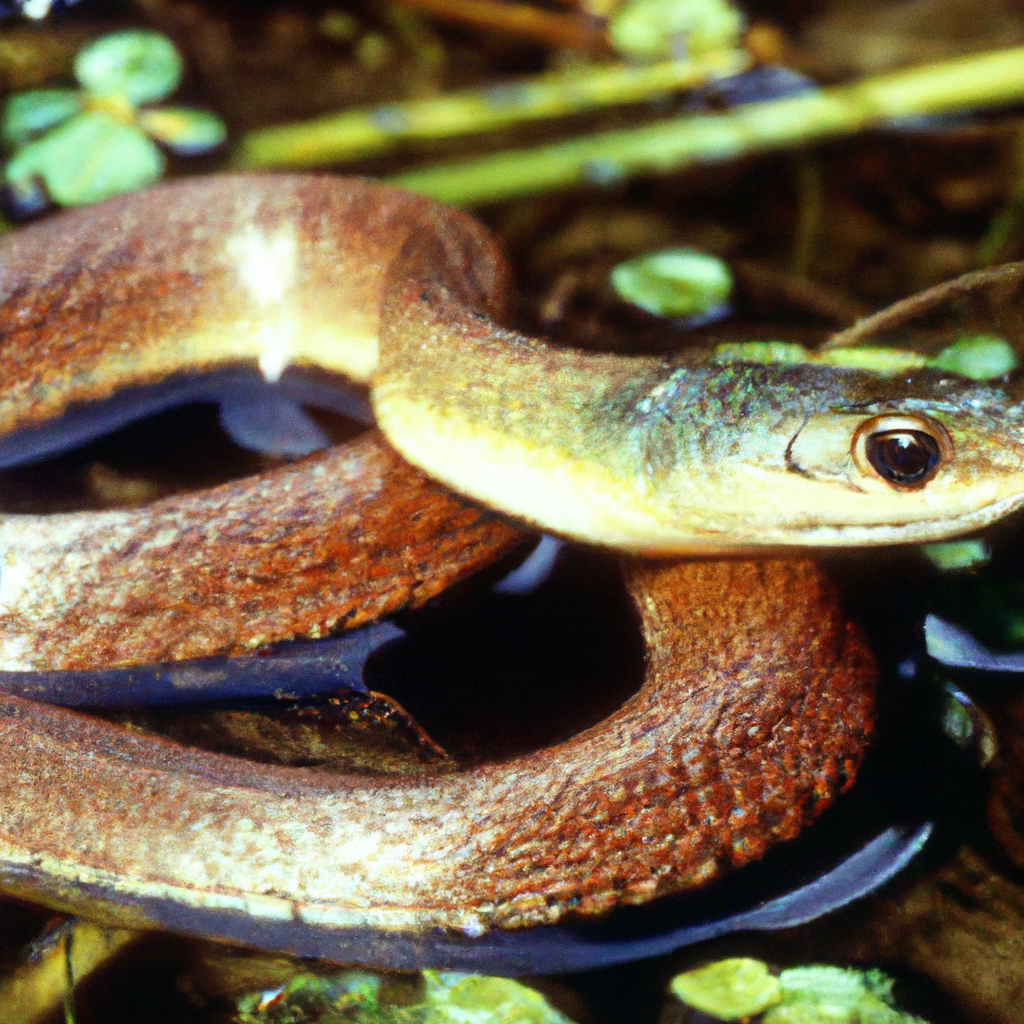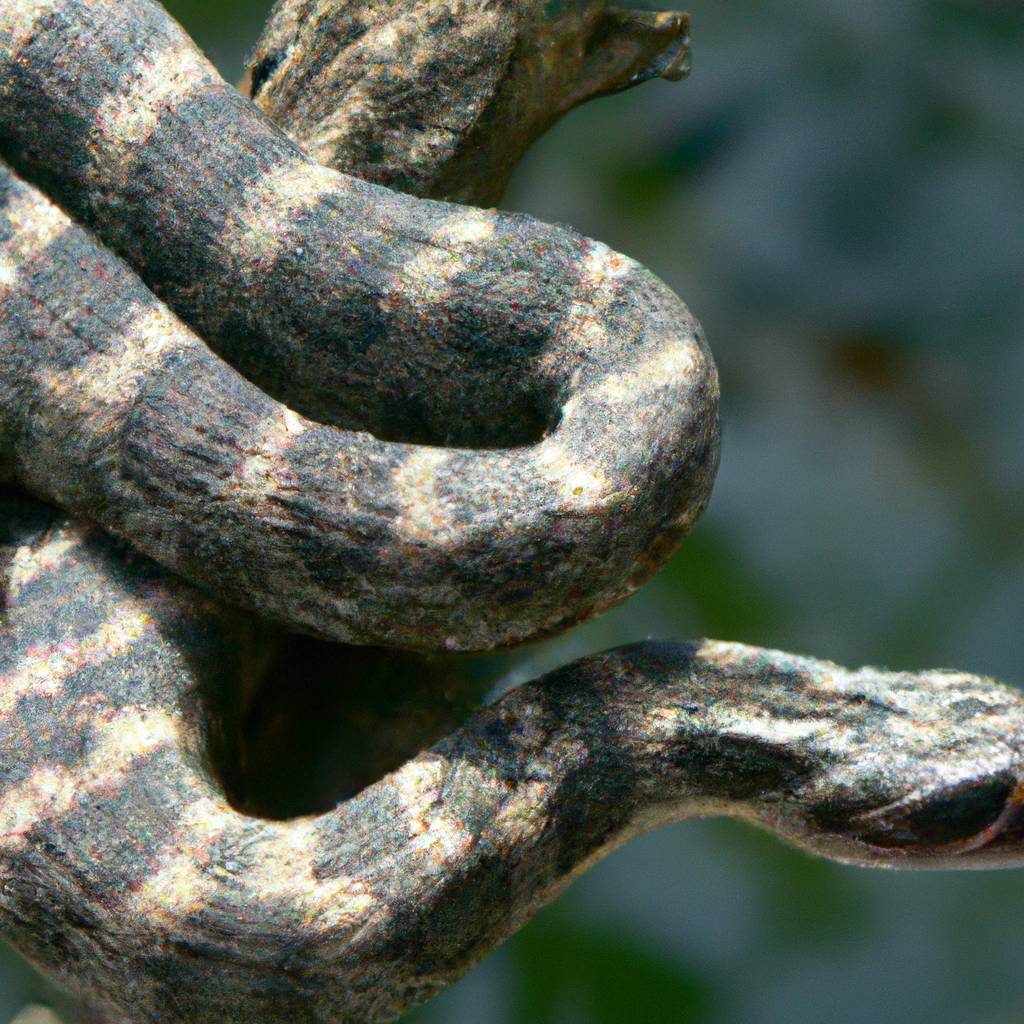Are you a snake enthusiast who is fascinated by aquatic snakes? If so, then this article is for you! Today, we will be discussing the care and maintenance of aquatic snakes. From the right habitat setup to proper feeding and handling techniques, we will cover all the essential information you need to ensure the well-being and happiness of your aquatic snake. So, get ready to dive into the world of aquatic snake care and discover everything you need to know to keep these fascinating creatures thriving.

Habitat and Enclosure
Natural Habitat
When it comes to providing the best care for your pet aquatic snake, replicating its natural habitat is crucial. Aquatic snakes typically inhabit bodies of water such as rivers, streams, and swamps. They rely on these water sources for hydration, cooling off, and hunting. In their natural habitat, they can often be found hiding among vegetation and debris. It’s important to consider these factors when setting up the enclosure for your aquatic snake.
Enclosure Size
The size of the enclosure plays a significant role in the overall well-being of your pet. For aquatic snakes, a spacious enclosure is essential to accommodate their active nature and provide room for swimming. The enclosure should be at least four feet long and two feet wide to give the snake ample space to move around and explore. It’s important to ensure the enclosure has a secure lid to prevent any escapes.
Temperature and Humidity
Maintaining the right temperature and humidity in the enclosure is crucial for the health and comfort of your aquatic snake. The ideal temperature range for most aquatic snakes is between 75-85°F (24-29°C) during the day, with a slight drop at night. An underwater heater or heat lamp can be used to achieve and maintain this temperature. The humidity level should be kept around 50-70% to mimic their natural environment. Regular monitoring of the temperature and humidity levels is essential to create a suitable habitat.
Lighting and UVB
Proper lighting is essential for the overall well-being of your aquatic snake. While they do not require UVB lighting like some reptiles, providing a regular light cycle helps maintain a day-night rhythm. A timer can be used to simulate natural daylight hours and ensure a consistent schedule. Additionally, having a basking lamp will provide a warm spot for the snake to thermoregulate.
Substrate and Water Source
Choosing the right substrate and providing a suitable water source are vital for the comfort and health of your aquatic snake. Aquatic snakes do well with substrates like cypress mulch or coconut fiber, which can retain moisture and create a naturalistic environment. It’s crucial to provide clean and chlorine-free water in a large enough container for your snake to submerge and swim. The water source should be deep enough to allow for complete immersion, as snakes enjoy spending time underwater.
Feeding and Nutrition
Diet and Prey
Aquatic snakes are carnivores and primarily feed on small fish, amphibians, and invertebrates in the wild. When keeping them as pets, you can offer a diet consisting of frozen-thawed or live appropriately-sized prey items such as fish, tadpoles, and shrimp. It’s important to source the prey from reputable sources to ensure their quality and safety.
Feeding Schedule
Establishing a regular feeding schedule is crucial for the well-being and growth of your pet aquatic snake. Juvenile snakes typically require more frequent feedings, usually every 4-5 days. As they mature, you can transition to feeding them every 7-10 days. Offering a varied diet is essential to ensure they receive a balanced nutritional intake.
Supplementing the Diet
To provide a well-rounded diet, it’s important to supplement your aquatic snake’s meals with appropriate vitamins and minerals. Calcium and vitamin D3 supplements can be dusted onto their prey items before feeding. This ensures that your snake gets the necessary nutrients, especially if they are not exposed to natural sunlight or UVB lighting.

Handling and Temperament
Proper Handling Techniques
When it comes to handling your pet aquatic snake, it’s crucial to prioritize their comfort and safety. Snakes can be sensitive to sudden movements and loud noises, so approaching them calmly and slowly is essential. Supporting the snake’s body and avoiding excessive handling will help prevent stress and potential injuries. Regular handling from a young age can help your snake become accustomed to human interaction and build trust.
Bonding with the Snake
Building a bond with your pet aquatic snake takes time and patience. Regular and gentle handling sessions can help establish trust between you and your snake. Start with short handling sessions and gradually increase the duration as your snake becomes more comfortable. Remember to always observe their body language and adjust your handling accordingly.
Recognizing Signs of Stress or Aggression
As a responsible snake owner, it’s important to be attentive to your pet’s behavior and well-being. Signs of stress or aggression in aquatic snakes can include hissing, tail rattling, defensive body postures, and refusing to eat. If you notice any of these signs, it’s crucial to give your snake space and assess the potential causes of stress. Consulting with a reptile veterinarian can help address any concerns and ensure the well-being of your aquatic snake.
Health and Veterinary Care
Regular Health Checks
Regular health checks are essential to spot any potential health issues early on and ensure the overall well-being of your pet aquatic snake. Conduct visual inspections to look for any signs of skin abnormalities, injuries, or parasites. Additionally, monitoring their eating habits, weight, and shedding patterns can provide valuable information about their health. If you notice any changes or concerns, consulting with a reptile veterinarian is highly recommended.
Common Health Issues
While properly cared for aquatic snakes are generally hardy, there are some common health issues to be aware of. Respiratory infections, skin infections, and parasites are among the most common ailments in snakes. Monitoring the humidity levels and maintaining a clean enclosure can help prevent these issues. It’s important to seek veterinary care if you notice any unusual symptoms or behaviors in your aquatic snake.
Finding a Reptile Veterinarian
To ensure the best possible care for your aquatic snake, it’s essential to find a reptile veterinarian who specializes in exotic pets. Reptiles require specialized knowledge and experience, so it’s important to choose a vet who is well-versed in their care. Seek recommendations from fellow reptile owners or local reptile clubs to find a reputable veterinarian in your area.

Reproduction and Breeding
Understanding the Breeding Cycle
Breeding aquatic snakes can be a rewarding experience for experienced snake owners. Before attempting to breed your snakes, it’s important to have a clear understanding of their breeding cycle. Research the specific breeding requirements of your snake species, including the necessary temperatures, photoperiod, and courtship behaviors. It’s vital to provide a conducive environment and carefully monitor the breeding pair for successful reproduction.
Creating a Breeding Environment
To encourage successful breeding, you need to create an appropriate breeding environment for your aquatic snakes. This may include adjusting the temperature and lighting conditions to simulate a specific season. Providing suitable hiding spots and ample space for courtship behaviors is also crucial. It’s important to carefully research the specific requirements of your snake species to ensure their breeding environment is optimized.
Incubation and Hatchling Care
After successful breeding, the female aquatic snake will lay eggs that require careful incubation. Research the specific incubation requirements of your snake species, such as temperature and humidity levels. Properly labeled and separated incubation containers should be used to prevent cross-contamination and ensure the well-being of the developing embryos. Once the eggs hatch, providing appropriate housing, heat, and nutrition is crucial for the healthy development of the hatchlings.
Common Species of Aquatic Snakes
African Olive Aquatic Snake
The African Olive Aquatic Snake, known for its vibrant colors and aquatic adaptations, is a popular species among snake enthusiasts. Found in parts of sub-Saharan Africa, these snakes thrive in freshwater habitats and are known for their excellent swimming abilities.
Banded Water Snake
With its distinctive black and yellow banding pattern, the Banded Water Snake is a common species that can be found in various regions worldwide. These non-venomous snakes prefer slow-moving bodies of water and are known for their excellent hunting skills.
Mangrove Snake
As the name suggests, the Mangrove Snake is well-adapted to the lush mangrove forests of Southeast Asia. These snakes are highly arboreal and are known for their beautifully patterned scales. Mangrove Snakes are venomous, but their venom is not considered dangerous to humans.
Rainbow Water Snake
The Rainbow Water Snake, also known as the Rainbow Marsh Snake, is native to the southeastern United States. Known for its iridescent black or dark brown scales, these non-venomous snakes can be found near freshwater habitats such as swamps, lakes, and rivers.
Diamondback Water Snake
The Diamondback Water Snake, native to North America, is named after the diamond-shaped patterns on its scales. These snakes are commonly found in aquatic environments such as rivers, streams, and ponds. They are non-venomous and play a vital role in controlling fish populations in their habitats.

Recommended Pet Aquatic Snakes
Corn Snake
While not exclusively aquatic, the Corn Snake is a popular choice for those who want a snake that is relatively easy to care for. Corn Snakes have a docile temperament, making them suitable for beginner snake owners. They are known for their attractive patterns and colors, and with proper care, can live for over 15 years.
Garter Snake
Garter Snakes are another option for those interested in keeping an aquatic snake as a pet. Although they are primarily terrestrial, they are semiaquatic and will often be found near bodies of water. Garter Snakes are active and curious, making them fascinating pets for observation.
Rough Green Snake
The Rough Green Snake, primarily found in North America, is a slender and arboreal species that can adapt to aquatic environments. These snakes are usually bright green in color and are known for being docile and non-aggressive. They require specific care, including high humidity levels, but can make interesting and rewarding pets.
Legal Considerations
Researching Local Laws and Regulations
Before acquiring an aquatic snake, it’s crucial to research and understand the local laws and regulations regarding keeping exotic pets. Some species may be protected or require permits to keep legally. Familiarize yourself with any restrictions or guidelines set by your local wildlife authorities to ensure you are in compliance with the law.
Obtaining Necessary Permits
If the species of aquatic snake you wish to keep is protected or requires a permit, it’s important to obtain the necessary permits before acquiring the snake. Failure to obtain the required permits can result in fines, confiscation of the snake, and legal consequences. Contact your local wildlife authorities or reptile organizations for guidance on the permit process.

Behavioral Traits and Characteristics
Aquatic Adaptations
Aquatic snakes have unique adaptations that enable them to thrive in aquatic environments. These adaptations include streamlined bodies, laterally compressed tails for efficient swimming, and eyes positioned on the tops of their heads, allowing them to stay partially submerged while scanning their surroundings.
Social Behaviors
While aquatic snakes are primarily solitary animals, they may exhibit social behaviors during breeding seasons or when searching for mates. Male snakes may engage in combat or compete for the attention of females. However, outside of the breeding period, aquatic snakes are generally solitary and prefer to have their own territories.
Activity Patterns
Aquatic snakes are most active during the warmer months when their natural habitats provide optimal conditions for hunting and reproduction. They are ectothermic, meaning their body temperature is regulated by the surrounding environment. During colder periods or when temperatures drop, aquatic snakes may enter a state of brumation, which is similar to hibernation.
Conclusion
As a responsible and caring pet owner, providing the best possible care and habitat for your aquatic snake is essential. By replicating their natural environment, providing a suitable diet, and offering appropriate veterinary care, you can ensure the well-being and happiness of your pet aquatic snake. Remember to always research the specific needs of your snake species and consult with experts or reptile veterinarians when needed. With proper care and attention, your aquatic snake can thrive and be a fascinating companion for years to come.